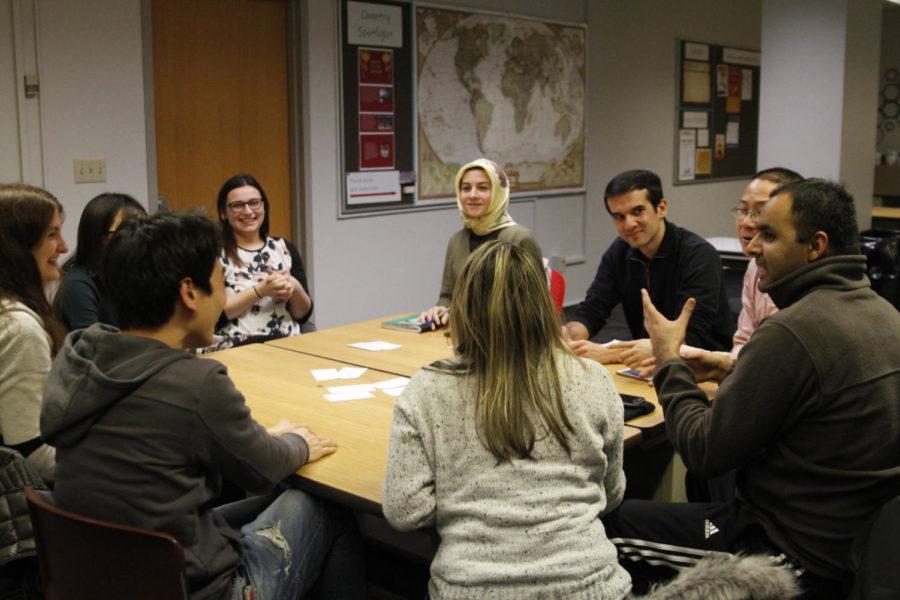The push for inclusion: International students on embracing their culture
Katlyn Campbell/Iowa State Daily
International Nest, a space in Parks Library is a place where international students can come together.
There are more than 90 culture and identity-based student organizations on campus, and while some students have the opportunity to share and celebrate their culture on campus, others, like Lindsay Wendy Ngobo Ndjele from Cameroon, do not have the same chance.
Since the fall of 2022, international students have made up 8.2% of the enrollment, with 2,443 students from 114 countries, according to data from the Office of the Registrar.
“As someone from a different generation than my parents and elders, I don’t know much about my traditions,” said Ngobo Ndjele, a freshman majoring in computer science. “I would never expect ISU to try incorporating events related to any culture from my country because they can only be held there. However, in terms of clubs, I think there are plenty of things to gain from the different cultures.”
Ngobo Ndjele said having clubs where modern Afro dances are taught or how to cook traditional dishes would be a unique way to learn from different cultures on campus.
“I think ISU still has some ways to go in terms of promoting different cultures,” Sean Chan, a senior majoring in business analytics, said. “I rarely see a lot of cultural events, which is unfortunate, and I wish there were more clubs that would be able to share more about their own culture and what they do.”
Most international students currently enrolled are from India, China, South Korea, Malaysia and Iran. However, for students from underrepresented countries, there may be a lack of access to active culture-based organizations.
“I don’t really mind that they don’t have stuff related to my culture, but I guess one thing that could be done is to make more inclusive clubs,” Ngobo Ndjele said. “where, for example, I could even teach the trends in music and dances from my country.”
Some international students are interested in solving this issue through the creation of more organizations, events and educational opportunities focused on increasing cross-cultural awareness on campus.
“Lack of exposure to other cultures is common here, but it is critical to seek out opportunities to learn about them,” said Thayla Tuler, a sophomore majoring in marketing. “Cultural events like traditional dance and music performance, art exhibitions and talks about history and contemporary issues can inform students and increase global awareness.”
Coming from countries rich in cultures, groups and traditions, the difference in exposure to various cultures on campus can be stark for students like Tuler, who is from Brazil, and Chan, an international student from Malaysia.
“My favorite thing is that Brazil is a nation that values diversity and embraces all people,” Tuler said. “It has a unique blend of Indigenous, African and European origins that results in unmatched cultural variety.”
Chan’s culture, being from Malaysia, stems from a combination of traditions from three groups: Malays, Chinese and Indians. This allows him to celebrate a variety of holidays, including Diwali, Chinese New Year, Eid and more.
“A tradition I enjoy a lot is celebrating all the different celebrations we have in Malaysia,” Chan said. “The atmosphere always feels amazing while being able to share amazing moments with friends and family.”
It is common for those from unique cultures to want to share their background and experiences, like Chan, who said he tries to share his experiences with different cultures alongside his to raise awareness about what the world has to offer.
“By doing that, I incorporated my culture into people’s minds,” Chan said. “So that they want to visit my country as well as to immerse themselves in the world of diversity.”
Your donation will support the student journalists of the Iowa State Daily. Your contribution will allow us to purchase equipment, send our student journalists to conferences and off-set their cost of living so they can continue to do best-in-the-nation work at the Iowa State Daily.

















